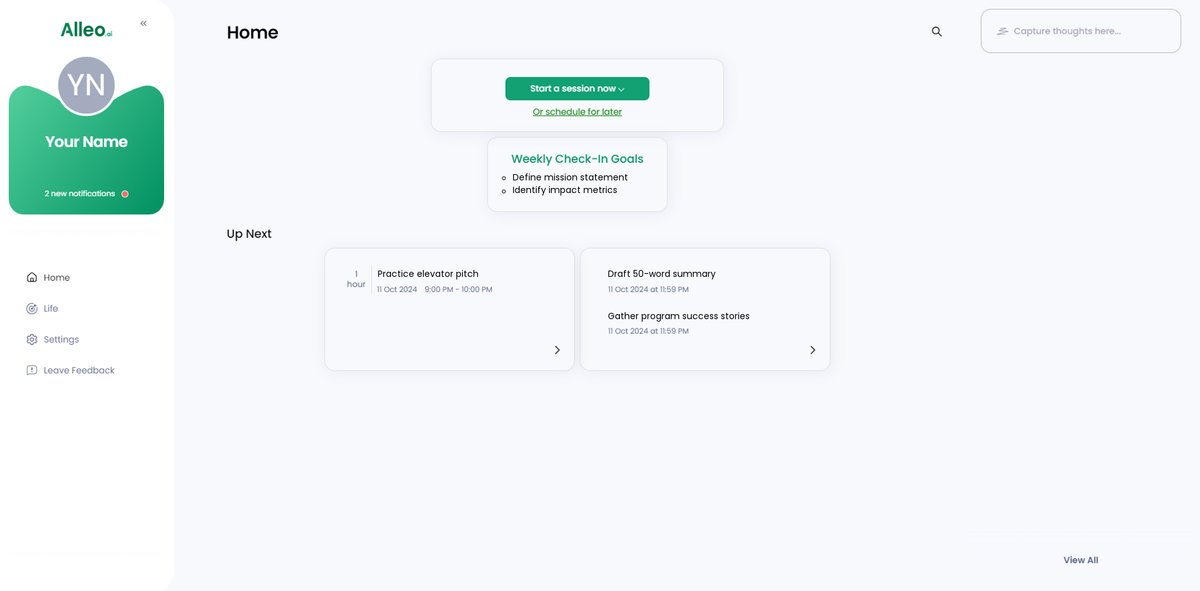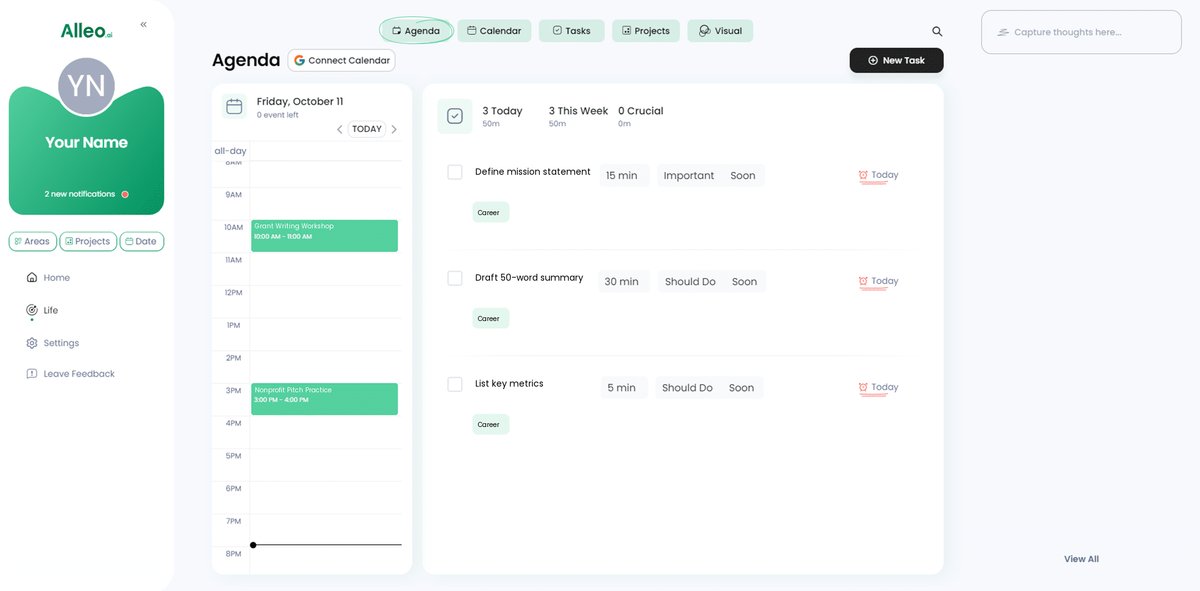The Ultimate Guide: How to Write Concise Program Summaries for Nonprofits
Imagine having only 50 words to convey the heart of your nonprofit’s mission and impact—sounds daunting, right? This challenge is at the core of writing concise nonprofit program summaries.
As a life coach, I’ve helped many nonprofit leaders navigate these challenges. I’ve seen firsthand the frustrations caused by these restrictive word counts when summarizing nonprofit initiatives.
In this article, I’ll share practical steps for writing concise program summaries for nonprofits. You’ll learn effective program description strategies and concise writing techniques for nonprofits to communicate your mission and impact within word limits. These tips will also help with grant proposal summary writing and impact reporting for nonprofits.
Let’s dive into these nonprofit communication strategies and program summary best practices.

Understanding the Challenge
Let’s talk about why writing concise nonprofit program summaries in restrictive word counts is so difficult. Many clients struggle with this because they want to convey every important detail about their nonprofit initiatives.
When you’re limited to just 50 words for your program description, it feels impossible.
These constraints aren’t just frustrating—they’re stressful. Nonprofit leaders often feel their mission and impact are being minimized in these concise writing tasks.
It’s a real pain point in nonprofit communication strategies.
In my experience, this challenge can lead to missed opportunities. Several clients have reported losing grants due to not meeting word count requirements in their grant proposal summary writing.
It’s disheartening and demotivating for those working on summarizing nonprofit initiatives.
But don’t worry. There are solutions for creating effective program descriptions.

A Roadmap to Writing Concise Program Summaries
Overcoming this challenge requires a few key steps. Here are the main areas to focus on to make progress in writing concise nonprofit program summaries:
- Identify Key Program Elements for Summary: Define your mission, impact metrics, and core programs for effective program descriptions.
- Use Action Verbs and Quantifiable Impact Metrics: Employ strong verbs and specific numbers to show achievements in your nonprofit documentation.
- Tailor Content to Specific Grant Requirements: Customize your summaries to align with each grant’s criteria, following grant proposal summary writing best practices.
- Practice with Word-Limited Elevator Pitches: Create and refine brief pitches for different audiences, honing your concise writing techniques for nonprofits.
Let’s dive into these strategies for summarizing nonprofit initiatives and creating SEO-friendly program summaries!
1: Identify key program elements for summary
Identifying key program elements is essential for writing concise nonprofit program summaries.
Actionable Steps:
- Define your mission in one concise sentence.
- Describe what the organization does, who benefits, and the impact it makes, focusing on clear and concise nonprofit messaging.
- Highlight core programs and unique aspects.
- Summarize key services in a brief yet impactful manner, following program summary best practices.
- Identify 2-3 quantifiable metrics showcasing success.
- Use numbers to demonstrate the program’s achievements, enhancing impact reporting for nonprofits.
Key elements to focus on include:
- Clear mission statement
- Unique value proposition
- Tangible impact metrics
Explanation: These steps help distill important details into a clear, impactful summary, aligning with effective program descriptions.
By focusing on mission, core programs, and metrics, you convey essential information quickly, a crucial aspect of summarizing nonprofit initiatives.
This approach aligns with trends emphasizing concise descriptions in nonprofit summaries and nonprofit communication strategies.
For further guidance on writing concise nonprofit program summaries, check out this resource.
These elements form the foundation of a compelling program summary, useful for grant proposal summary writing and SEO-friendly program summaries.
2: Use action verbs and quantifiable impact metrics
Using action verbs and quantifiable impact metrics is crucial for writing concise nonprofit program summaries that are clear and compelling.
Actionable Steps:
- Start with strong action verbs. Use verbs like “Empowered,” “Transformed,” and “Achieved” to describe your accomplishments when summarizing nonprofit initiatives.
- Include specific numbers. Demonstrate your impact with metrics such as “Increased graduation rates by 20%” or “Served 500 families,” enhancing your effective program descriptions.
- Integrate brief success stories. Highlight testimonials or quotes from beneficiaries to humanize your data, improving your nonprofit communication strategies.
Explanation: These steps help make your summary more dynamic and persuasive. Strong verbs and specific metrics ensure clarity and impact, which is essential for grant proposal summary writing and impact reporting for nonprofits.
For more on crafting effective summaries, visit this resource. Effective communication is key to winning grants and creating SEO-friendly program summaries.
By focusing on action verbs and quantifiable metrics, you enhance your program summary’s effectiveness, making it more likely to resonate with grant reviewers. This approach aligns with program summary best practices and concise writing techniques for nonprofits.

3: Tailor content to specific grant requirements
Tailoring your content to meet specific grant requirements is crucial for success when writing concise nonprofit program summaries.
Actionable Steps:
- Research grant requirements. Attend grant info sessions and read guidelines thoroughly to understand criteria and priorities for effective program descriptions.
- Customize summaries. Adjust your summary to align with the grant’s focus areas, emphasizing different program aspects as needed, using concise writing techniques for nonprofits.
- Use templates. Develop templates for different grant types to streamline the process and ensure consistency in summarizing nonprofit initiatives.
Consider these aspects when tailoring your content:
- Funder’s priorities
- Grant-specific language
- Alignment with organization’s goals
Explanation: These steps help ensure your content meets grant criteria, increasing your chances of success. Customizing summaries shows funders you’ve done your homework and mastered program summary best practices.
For more on creating effective summaries, visit this resource. Connecting your content to grant priorities is key to winning funding and improving your nonprofit communication strategies.
Tailoring your summaries to specific grants will make your applications stand out and enhance your grant proposal summary writing skills.

4: Practice with word-limited elevator pitches
Practicing with word-limited elevator pitches is crucial for writing concise nonprofit program summaries and refining your organization’s message.
Actionable Steps:
- Create multiple versions. Craft program summaries in 50, 100, and 150 words to fit different grant requirements, focusing on effective program descriptions.
- Seek feedback. Present these pitches to colleagues or mentors and gather their input on clarity and impact, enhancing your nonprofit communication strategies.
- Refine and iterate. Continuously improve your pitches based on feedback and observed results, incorporating concise writing techniques for nonprofits.
Elements of an effective elevator pitch for summarizing nonprofit initiatives:
- Concise problem statement
- Unique solution offered
- Call to action
Explanation: These steps are vital for ensuring your message is clear and impactful, even within strict word limits, which is essential for grant proposal summary writing.
Regular practice and refinement help you convey essential details concisely, a key aspect of nonprofit documentation tips.
For more strategies on effective communication, visit this resource.
Clear, concise pitches increase your chances of grant success and are crucial for impact reporting for nonprofits.
Effective elevator pitches can make a significant difference in your grant applications, showcasing your ability in writing concise nonprofit program summaries.

Partner with Alleo for Grant Writing Success
We’ve explored the challenges of writing concise nonprofit program summaries. Let’s make this journey easier with Alleo, your partner in mastering concise writing techniques for nonprofits.
Getting Started with Alleo:
- Set Up an Account: Sign up for free and start your 14-day trial, no credit card needed. Begin your journey to effective program descriptions.
- Create a Personalized Plan: Alleo will help you set goals for your grant writing, including strategies for summarizing nonprofit initiatives.
- Work with Alleo’s Coach: Receive tailored coaching sessions, just like with a human coach, focusing on nonprofit communication strategies.
How Alleo Supports You:
- Progress Tracking: Alleo follows up on your progress regularly, ensuring you’re on track with your program summary best practices.
- Adaptability: The coach handles any changes in your plan, helping you maintain clear and concise nonprofit messaging.
- Accountability: Stay on track with text and push notifications, enhancing your nonprofit documentation tips implementation.
Alleo offers affordable, tailored coaching for nonprofit leaders facing word count challenges in writing concise nonprofit program summaries.
Ready to get started for free? Let me show you how to create SEO-friendly program summaries and improve your grant proposal summary writing!
Step 1: Log In or Create Your Account
To begin your journey with Alleo and tackle those tricky word count challenges, simply log in to your account or create a new one to start your 14-day free trial.

Step 2: Choose Your Focus Area
Select “Setting and achieving personal or professional goals” to address your nonprofit’s challenge of writing concise program summaries, helping you develop the skills needed to effectively communicate your mission and impact within word limits.

Step 3: Selecting the life area you want to focus on
Choose “Career” as your focus area in Alleo to refine your grant writing skills and craft compelling program summaries, directly addressing the challenges nonprofit leaders face with word limits and funding applications.

Step 4: Starting a coaching session
Begin your journey with Alleo by scheduling an initial intake session, where you’ll collaborate with the AI coach to establish your personalized grant writing plan and set achievable goals for your nonprofit’s program summaries.

Step 5: Viewing and Managing Goals After the Session
After your coaching session, check the Alleo app’s home page to view and manage the goals you discussed, keeping you on track with your nonprofit’s grant writing objectives.

Step 6: Adding events to your calendar or app
Use Alleo’s calendar and task features to schedule and track your grant writing activities, helping you stay on top of deadlines and monitor your progress in crafting concise program summaries.

Bringing It All Together: Effective Nonprofit Summaries
You’ve learned how to tackle the challenge of writing concise nonprofit program summaries.
By focusing on key elements, using action verbs, tailoring content, and practicing elevator pitches, you can overcome restrictive word counts and master concise writing techniques for nonprofits.
I understand how frustrating this process of summarizing nonprofit initiatives can be.
Take it one step at a time when developing effective program descriptions.
Remember, effective communication is crucial for nonprofit success, especially when it comes to clear and concise nonprofit messaging.
Give these program summary best practices a try to enhance your nonprofit documentation.
And don’t forget, Alleo is here to help you along the way with nonprofit communication strategies.
Start your free trial today and transform your grant applications with improved grant proposal summary writing.
You’ve got this! Your SEO-friendly program summaries will boost your impact reporting for nonprofits.